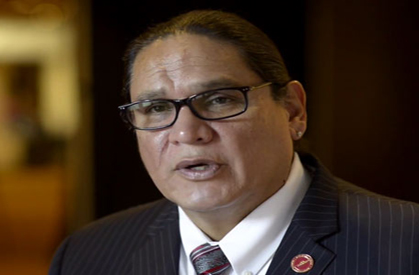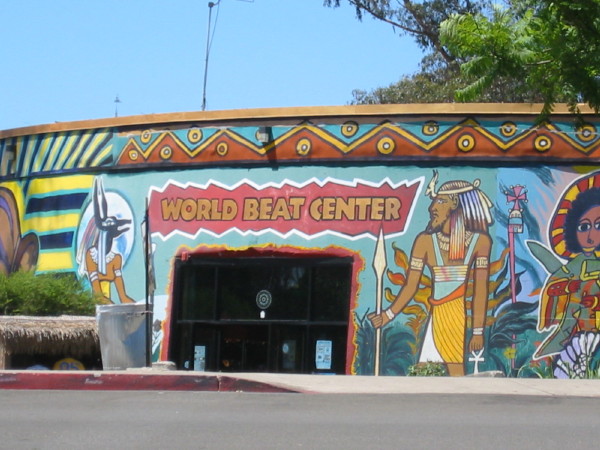Posted by: inewsource staff January 26, 2015
by Leo Castaneda and Brad Racino | inewsource
Why this matters: Civil asset forfeiture is a mechanism police use to thwart criminal activity and bolster their budgets, yet critics say the program is ripe for abuse.
A federal program allowing police to seize money and assets related to drug trafficking has been good to San Diego County’s cops and prosecutors, providing nearly $30 million to their agencies between 2007 and 2014.
Law enforcement agencies have used that money to purchase equipment and to fund services they would otherwise do without.
Some examples: El Cajon police bought a $15,000 “throwbot,” a robot SWAT teams throw into dangerous buildings.
San Diego police spent nearly $1.9 million on its helicopters, National City police upgraded a fleet of vehicles, and Oceanside temporarily financed the purchase of a $243,000 BearCat, an armored, bullet-proof police vehicle.
All the documents detailing these purchases were released by the Washington Post in mid-January, and inewsource has made San Diego County’s available in a searchable database here.
Big changes, little effect
On Jan. 16, U.S. Attorney General Eric Holder announced changes to the asset forfeiture program, officially called the Equitable Sharing Program. For more than 30 years, it has operated like this:
Download all San Diego law enforcement agency filings by clicking here.
A local law enforcement agency seizes cash or an asset, such as a car, weapons, even real estate, that it believes is connected to drug trafficking. That agency then asks the federal government to “adopt” the seized assets.
Once the government takes over the assets, it divides the total value between the federal and local agencies, with up to 80 percent going back to the local police department.
Under the changes announced by Holder, the government will no longer adopt those seized assets. But that doesn’t mean local departments will suffer. They can continue to seize assets themselves, and they can continue to benefit from forfeitures that are part of a joint state and federal operation.
That means that for most asset forfeitures local law enforcement agencies will be able to cut out the middle man — the federal government — and will get more of the money from those assets.
The downside of the federal government stepping out of the picture is that stricter rules will kick in in some cases. Local agencies will need a related criminal conviction in those instances before they can cash in the assets.
The federal program has long been criticized by members of the House and Senate, as well as civil rights activists. It even resulted in a segment on the satirical HBO show “Last Week Tonight with John Oliver” in October 2014.
Criticism centers on the fact that law enforcement officials don’t have to arrest or charge a person with a crime before seizing his or her assets, and the person is often required to prove that the money or assets aren’t related to criminal activity in order to get it back.
inewsource analyzed records the Washington Post received through a Freedom of Information request to the U.S. Department of Justice. Fifteen San Diego County law enforcement agencies participated in the program, including the San Diego State University Police Department and the San Diego County Probation Department.
One-time purchases
The largest recipient of forfeiture money was the San Diego County Sheriff’s Department, which has received almost $10 million since 2007. Sheriff Bill Gore told inewsource the funds are used to handle “unexpected” expenditures, such as a wiretap or the construction of a new facility.
CREATOR: gd-jpeg v1.0 (using IJG JPEG v62), quality = 90
Sheriff Bill Gore. Photo | Sam Hodgson
“I look at it as a very fiscally sound way to fund law enforcement operations,” Gore said, “by taking the criminal proceeds of criminal activity to fund law enforcement to break up further criminal activity.”
Holder’s decision, Gore said, will have a “minimal impact” on the Sheriff’s Department because in San Diego County, the overwhelming majority of asset seizures are done through task force operations in conjunction with the federal government. Holder’s new guidelines apply only to situations where a police agency, working alone, seizes property.
“Our seizures, like I say, the vast majority, are not done in that fashion.”
Other law enforcement agencies in the county also have used asset forfeiture money for one-time purchases.
Oceanside Police Department spent $243,352 on a BearCat armored vehicle in 2012. However, the following year the department returned the money and paid for the vehicle with a U.S. Department of Homeland Security grant.
Oceanside’s Lt. Sean Marchand said the BearCat was an important piece of equipment to acquire.
“I can tell you we’ve used it (BearCat) several times, it’s fortunately not been shot. However it’s a vehicle that’s capable of providing safety and security for those inside, those on the backside of it relative to whatever threat is there,” Marchand said. “And honestly it’s there to protect the citizens of Oceanside.”
In fiscal year 2009, Oceanside used asset forfeiture money to purchase a $147,000 weapons simulation system that allows police officers to train for use-of-force simulations and $388,470 on a mobile command vehicle.
Funding vehicles of every kind
Carlsbad Police Department used some of its money for something less flashy: $184,000 in furniture and cabinets for new detectives. It also bought an air purifier for its evidence and property room, as well as weapons and gear such as riot control helmets.
Search or browse all San Diego county law enforcement agency spending of special funds here.
Fiona Everett, the Carlsbad department’s senior management analyst, said asset forfeiture money is a good way to invest in equipment the agency needs but couldn’t normally afford. For example, in 2009 it was able to use asset forfeiture money to buy a $213,000 mobile command post similar to the one Oceanside police bought.
“And that’s a good example of something that as a department we didn’t have the money to buy… but there’s certainly a need for it to provide the best service to the community,” Everett said.
The National City Police Department focused its seized assets money largely on vehicles, starting with a $161,000 command vehicle in fiscal year 2009. The following year it spent $1,248 on tires and a battery for a BMW M6 Series, plus $9,165 on storage and management for three cars including a 2007 BMW M6 Series.
The National City department did not respond to repeated calls for comment.
Between 2001 and 2012, National City spent more than $191,000 on two Chevy Tahoes, three Nissan Altimas, a Ford van and two Ford Fusions. It spent an additional $73,000 on repairs and build-outs such as undercover packages, window tints and trunk vaults.
The San Diego Police Department also used seized asset funds to pay for vehicle expenses. However, that department aimed higher than National City department — several thousand feet higher. In fiscal 2012, San Diego police spent almost a million dollars on its helicopter, including gasoline ($394,000), insurance ($139,000) and
“Police Air Support Helicopter Improvements” ($397,000).
San Diego police did not respond in time for publication.
San Diego News
National Indian Gaming Association Rebuilding Communities through Indian Self Reliance

San Diego once again welcomes the National Indian Gaming Association to its 2015 Trade Show and Convention
The National Indian Gaming Association is a nonprofit trade association comprised of 184 American Indian Nations and other nonvoting associate member. The mission of NIGA is to advance the lives of Indian people - economically, socially and politically. NIGA operates as a clearinghouse and educational legislative and public policy resources for tribes, policymakers and the public on Indian gaming issues and tribal community development.
The mission of NIGA is to protect and preserve the general welfare of tribes striving for self-sufficiency through gaming enterprises in Indian Country. To fulfill its mission, NIGA works with Federal government and Congress to develop sound policies and practices and to provide technical assistance and advocacy on gaming related issues. In addition, NIGA seeks to maintain and protect Indian sovereign governmental authority in Indian Country.
Ernie Stevens, Jr. is the Chairman and national spokesperson for the National Indian Gaming Association (NIGA) in Washington, D.C. Stevens is currently completing his seventh two-year term as the organization’s leader, which is a position elected by the member tribes of the National Indian Gaming Association.
As Chairman of NIGA, Stevens represents the Indian gaming industry. In this role, he has worked to educate Congress, the media and the public about the positive impacts of Indian gaming on tribal and nearby communities.
Stevens is also responsible for shaping policy initiatives that have the potential to impact the industry. He has testified before Congress on a number of topics from proposed amendments to the Indian Gaming Regulatory Act (IGRA) to Internet gaming. In addition to his role as spokesman, Stevens has worked to build consensus among NIGA’s diverse member Tribes and is often quoted as saying, “Our membership is our strength, and we are strongest when our voice is unified.”
He has also succeeded in building strong coalitions with other Indian and non-Indian organizations to help strengthen the industry. In the face of constant challenges while Stevens has served as Chairman, NIGA has consistently defended any movement in Washington, DC against the Principles of Tribal Sovereignty. Stevens has led the Association and worked to protect Tribal Sovereignty and strengthen the Indian gaming industry. During his tenure, Indian gaming revenues have risen from $11 billion in 2000 to 28.6 billion in 2014.
From 1993 to 1999 Stevens served as an elected councilman for the Oneida Nation in Wisconsin. He is a former First Vice-President of the National Congress of American Indians (NCAI).
As a respected leader in Indian Country, Stevens also serves as a long-standing board member on the National Center for American Indian Enterprise Development, the Nike N7 Foundation Board, the Executive Board of the Center for Native American Youth and the Native American Advisory Board for the Boys & Girls Club of America.
The Chairman has been recognized for his outstanding leadership and his advocacy in Indian Country by numerous organizations. He was recently inducted into the American Gaming Association’s Gaming Hall of Fame. The Association on American Indian Affairs recognized his lifetime achievements in November and he was inducted into the Boys & Girls Clubs of America Alumni Hall of Fame in 2012.
Chairman Stevens received an Associate’s degree from Haskell Indian Nations University in 1983 where he served as the Vice President of the Student Senate. He was a two year starting center and team captain for the Haskell Basketball Team. Stevens also earned a Bachelor of Science degree in Criminal Justice from Mount Senario College in Ladysmith, Wisconsin (1986). He was a three sport letterman and served as President of the Native American Student Council.
Chairman Stevens is an enrolled member of the Oneida Nation of Wisconsin. He and his wife Cheryl have been married for over 30 years. Together they have 5 children and 13 grandchildren.
More Articles ...
Subcategories
San Diego
Barrio Logan, Black Mountain Ranch, Carmel Mountain Ranch, Carmel Valley, City Heights, Clairemont Mesa, College Area, Del Mar Mesa, Downtown, Center City, East Elliott, Eastern Area, Encanto, Fairbanks Ranch Country Club, Greater Golden Hill, Kearney Mesa, Kensington-Talmadge, La Jolla, Linda Vista, Midway Pacific Hwy Corridor, Miramar Ranch North, Mira Mesa, Mission Beach, Mission Valley, Navajo, Normal Heights, North City Future Urbanization Area (NCFUA), North Park, Ocean Beach, Old Town San Diego, Otay Mesa, Otay Mesa - Nestor, Pacific Beach, Pacific Highlands Ranch, Peninsula, Rancho Bernardo, Rancho Encantada, Rancho Penasquitos, Sabre Springs, San Pasqual Valley, San Ysidro, Scripps Ranch, Serra Mesa, Skyline Paradise Hills, Southeastern San Diego, Tierrasanta, Tijuana River Valley, Torrey Highlands, Torrey Hills, Torrey Pines, University, Uptown, Via de la Valle.
Print copies here!

Central
Educational Cultural Complex
Logan Heights
Malcolm X
North Park













